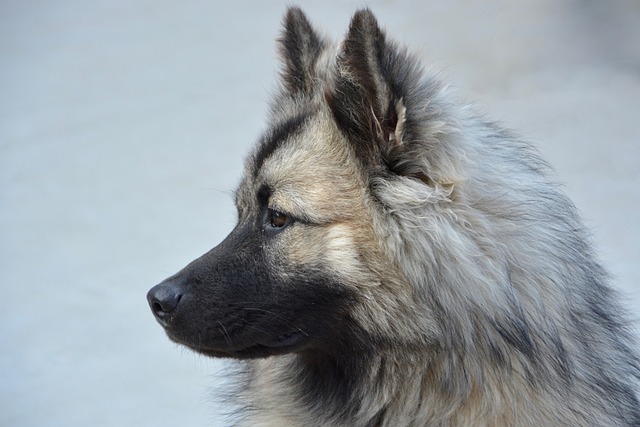


The Eurasier is a medium-sized, fluffy dog breed known for its calm and balanced temperament. With its beautiful coat, pointed ears, and bushy tail, the Eurasier is an attractive companion dog that forms close bonds with its family. The breed is known for being quiet, intelligent, and alert, often taking on the role of a family protector. While not overly energetic, the Eurasier enjoys moderate exercise and thrives in a loving, structured environment. Originally bred as a companion and watchdog, the Eurasier makes a great family pet due to its affectionate and loyal nature.
The Eurasier was developed in Germany in the late 1960s and early 1970s by Julius Wipfel, who sought to create a breed that combined the best qualities of the German Wolfspitz, the Chow Chow, and the Samoyed. These breeds were selected for their excellent temperament, protective instincts, and striking physical characteristics. The goal was to create a dog that was affectionate and loyal but also protective and capable of living harmoniously with families. The Eurasier was recognized by the Fédération Cynalogique Internationale (FCI) in 1973 and has since become more popular in countries across Europe, with a growing presence in the United States. Despite its relatively recent development, the Eurasier has gained a reputation as a reliable and affectionate companion dog.
The Eurasier is a medium-sized breed, standing between 19 to 24 inches at the shoulder and weighing between 40 to 70 pounds. The breed has a well-balanced and sturdy build, with a double coat that is thick, soft, and stands out. The outer coat is dense and medium-length, while the undercoat is soft and woolly, providing insulation. Common coat colors include black, wolf-gray, red, and sesame (red with black-tipped hairs), often with lighter markings on the chest, paws, and tail. The breed’s head is broad and wedge-shaped, with a slightly pointed muzzle. Their ears are erect and triangular, adding to their fox-like appearance. The Eurasier’s tail is thick, bushy, and carried over its back in a gentle curve. Their eyes are almond-shaped and dark, giving them an alert and intelligent expression.
The Eurasier is known for its calm, intelligent, and independent nature. They are generally friendly with their family members and tend to form strong bonds with their owners. This breed is often described as "reserved" around strangers, making them good watchdogs, but they are not aggressive unless provoked. The Eurasier is highly observant and may be cautious in new situations or with unfamiliar people. They are affectionate and enjoy being close to their family but are not overly demanding of attention. This breed tends to be very patient with children and can be quite tolerant and gentle. However, because of their independent streak, they may not always obey commands immediately, making early training and socialization crucial. Eurasier dogs can be aloof with other animals, particularly those of the same sex, but with proper socialization, they can get along well with other pets in the household.
The Eurasier has moderate exercise needs. While they are not overly energetic, they require regular physical activity to stay healthy and content. Daily walks, along with occasional playtime, are usually sufficient to meet their exercise requirements. These dogs enjoy having a structured routine, and they can benefit from mentally stimulating activities, such as obedience training or puzzle games, to keep them engaged. Despite their calm demeanor, the Eurasier is an intelligent breed that needs mental stimulation to prevent boredom. Without enough exercise or mental challenges, they may become frustrated or exhibit unwanted behaviors. This breed thrives in homes with an active family, as long as their exercise needs are met, they can adapt to apartment living as long as they receive regular walks and outdoor playtime.
The Eurasier is an intelligent breed but can be somewhat independent, which may make training a challenge for first-time dog owners. They respond best to positive reinforcement methods, including treats, praise, and play. Harsh training methods are not effective with this breed, as they tend to be sensitive and may become stubborn if they feel mistreated. Early socialization is important for the Eurasier to develop into a well-rounded adult. Exposure to various people, animals, and environments from a young age will help them become more adaptable and comfortable in new situations. The Eurasier can sometimes be reserved or aloof, especially with unfamiliar people, so socialization helps to ensure they are friendly and confident in different settings. With proper training, the Eurasier can excel in obedience and become a well-behaved family companion.
The Eurasier is generally a healthy breed with a lifespan of around 12 to 14 years. Like all breeds, they can be prone to certain health issues, including hip dysplasia, hypothyroidism, and eye conditions such as progressive retinal atrophy (PRA). Regular veterinary check-ups are important to monitor their health and address any concerns early on. The Eurasier's thick coat requires regular grooming to prevent matting and tangling. Brushing once or twice a week should be sufficient to maintain their coat's condition. During shedding season (typically spring and fall), more frequent brushing may be necessary to manage the increased hair loss. Additionally, it is important to check their ears regularly for signs of infection, as their erect ears can sometimes trap moisture. Dental care is also important, and routine tooth brushing is recommended to prevent dental issues.
The typical lifespan of a Eurasier is between 12 to 14 years. With proper care, including a balanced diet, regular exercise, and routine veterinary visits, they can enjoy a long, healthy life. Like many breeds, they are prone to certain health conditions, so regular monitoring for signs of illness is important to ensure that they stay in good health as they age.
© copyright Dog Compendium 2024 - 2025